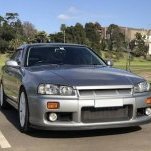Wheel Alignment Question, Car Feeling More Skittish
Announcements
-
Similar Content
-
Latest Posts
-
The team at OBD2 Australia are pretty good, shoot them an email and ask them. I've dealt with them before for work stuff. I'd be shocked if it didn't work, so long as Consult can activate the ABS. But you might need to use KLine for it which would be the stopper, as I don't think that piece does KLine comms.
-
By Dose Pipe Sutututu · Posted
Yeah and hence my ghetto way of slamming the brakes, get the ABS to cycle, rebleed seems to be a sensible workaround. -
By TurboTapin · Posted
Hey! Happy to help. Nothing inherently wrong with the adapter, it's more so with Brett Collins himself. He gave me a lot of incorrect information when I was in contact with him and was extremely rude when I challenged him. He stated I could not use any aftermarket twin plate clutches except for his own, not to use the dush shield, bla bla bla and it was all BS. Collins stated to cut roughly 14mm's off the housing, I took off 15mm to make room for the dust shield. I would confirm with whatever adapter manufacturer you're using. -
There's plenty of OEM steering arms that are bolted on. Not in the same fashion/orientation as that one, to be sure, but still. Examples of what I'm thinking of would use holes like the ones that have the downward facing studs on the GTR uprights (down the bottom end, under the driveshaft opening, near the lower balljoint) and bolt a steering arm on using only 2 bolts that would be somewhat similarly in shear as these you're complainig about. I reckon old Holdens did that, and I've never seen a broken one of those.
-
Let's be honest, most of the people designing parts like the above, aren't engineers. Sometimes they come from disciplines that gives them more qualitative feel for design than quantitive, however, plenty of them have just picked up a license to Fusion and started making things. And that's the honest part about the majority of these guys making parts like that, they don't have huge R&D teams and heaps of time or experience working out the numbers on it. Shit, most smaller teams that do have real engineers still roll with "yeah, it should be okay, and does the job, let's make them and just see"... The smaller guys like KiwiCNC, aren't the likes of Bosch etc with proper engineering procedures, and oversights, and sign off. As such, it's why they can produce a product to market a lot quicker, but it always comes back to, question it all. I'm still not a fan of that bolt on piece. Why not just machine it all in one go? With the right design it's possible. The only reason I can see is if they want different heights/length for the tie rod to bolt to. And if they have the cncs themselves,they can easily offer that exact feature, and just machine it all in one go.
-







Recommended Posts
Create an account or sign in to comment
You need to be a member in order to leave a comment
Create an account
Sign up for a new account in our community. It's easy!
Register a new accountSign in
Already have an account? Sign in here.
Sign In Now